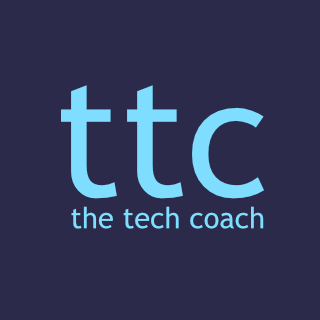I am all too happy that we are driving the change, given that the destination is deeper learning; I just hope my passengers don’t ask me “are we there yet”, given the technology they have at their fingertips (Google/Apple Maps) I am sure they will be all too aware of OUR accelerated progress. Having said that, I have become somewhat of an educational architect and restructured a couple of learning experiences recently, with interesting results.
I run an after-school robotics club with sixteen Grade 6,7 and 8 students. We had to go over the least exciting part, I hid this bias from the students, and start our learning on the research project. I started by showing them an inspirational video of how the project might look in the real world. We then moved on to look at the official engineers’ notebook from FLL, to help come up with ideas.
Once the students had enough information, I directed the students to work with someone else in their team to suggest a research project to work on – I picked students to work with another student that had FLL experience before, to try and find a balance and therefore work, somewhat, interdependently; to encourage deep learning as per the deep learning progression chart. They then had to record their response using my beloved Flipgrid.
After they finished recording their video, I asked the students to watch someone else’s research project proposal and then comment on that. I also gave them the option of uploading the video after the club had finished, if they wanted to spend more time thinking about potential solutions. I believe that this worked really well, as the students were discussing each other’s projects, weighing up whether or not they would be successful.
Global Collaboration
Moving on to going beyond the classroom, and making good on a promise I made in Course 4 Week 1, the realization of students sharing (using Flipgrid) their digital citizenship learning from DQ World to students at international schools in Cambodia and Hong Kong – finally came to fruition. I can’t tell you how awesome it was to see students from different nationalities, cultures, and ages sharing their top three tips for how they are upstanding digital citizens – and sharing this video! Some of my students came up to me during advisory to say how impressed they were with students from my old school in Cambodia saying how they used their digital citizenship skills.
Even by producing the video, all of the students were practicing their digital citizenship skills by not revealing their names, or even using filters and emojis to censor their identity; which some did. It was a fantastic exercise in a far-reaching and real learning experience!
Learning Environment Change
I am not talking about climate change, although maybe I should be, what I’m talking about is creating an environment that empowers our students to embrace deep learning, and how I can shift my practice to accommodate this.
My 9th Graders will shortly begin a new unit, in which they have to create a music video; removing boundaries from school to the real world. I will match each task in Understanding Deeper Learning in The Deep Learning Planning Guide.
This Tuesday we will gather in the plaza and watch professional music videos as well as videos made by last year’s students. The purpose of watching the videos is to come up with a working vocabulary, related to examples, of cinematography, movie editing techniques, and so on. Rather than give the students the keywords and definitions, I will give the keywords, and then ask the students to match these to where they have been used throughout the various videos – mastery of core (subject) academic content.
They will then need to use this new knowledge to start planning, storyboarding and eventually creating their own music videos (critical thinking and problem-solving), which they will do in predetermined groups. In fact, the first challenge that the groups will face will be to prepare an elevator pitch, a 20-30 second description of their music video (taken from 101 Things I Learned in Film School). This will serve them well as they will need to communicate succinctly what their intentions are; effective communication. The students must upload this task using Flipgrid, which we can not only share with the students within the class, but also with other media and film students in higher grades.
Groups
Groups will be selected* based on different competencies (some of which will be complex and without instructions), in order to create an interdependent working environment. For example, who will take the lead on cinematography, choreography, sound editing, and film editing? I will observe a lot at the beginning to nurture the move from limited to proficient – as laid out in the collaboration deep learning progression table. Furthermore, throughout the project, students will need to be self-directed in order to make the pre-production, production, and post-production phases of the music video; self-directed learning. They will keep track of their deadlines using Padlet, also good to share resources with each other. And they can use WeChat, Teams, and email to communicate throughout.
*I need to check my own invisible bias’s here when I choose the groups, being careful not to simply deny students to work with their friends; my bias could be that they might be that productive. However, it could catapult their performance as they may be more inclined to work together outside of school; social connections.
Finally, students will keep a journal of the whole process (OneNote, which I can add feedback to at any time), so that they can reflect on the struggles they had (including how they overcome them) and celebrate their victories; academic mindset.
I hope that all of the above will push our students to raise the achievement bar for themselves!
